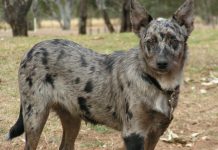Sloths are mammal species that live in the tropical regions of the Southern and Central America. They hang on to the branches of trees using their long claws and feast on the leaves that cannot be reached by other animals. They have long claws that measure 3 to 4 inches, which make it difficult for them to walk on the ground. Hence, they spend their time mostly hanging on the trees that are their homes.
Sloths are categorized into two types: the two-toed sloths and the three-toed sloth bears. The sloths that are two-toed are slightly bigger in size as compared to the three-toed sloths. But they both share similar features and measure around 23 to 27 inches, which is the size of a dog. They weigh about 17.5 to 18.75 pounds; i.e., 8 kilograms. According to the Zoo of San Diego, sloths were much bigger in size thousands of years ago and could grow as large as an elephant. These big sloths became extinct around 10,000 years ago and were discovered in North America.
Sloth Facts and Information :
- The scientific name of sloths is Bradypus, which means “slow feet” in Greek. It is the world’s slowest animal, so is its name. According to National geographic, sloths are slower than even the algae that grows on their furs.
- A sloth moves slowly as compared to other mammals. They can climb to a height of about 6 to 8 feet per minute.
- Sloths are known to be excellent swimmers. They can easily do breaststroke just like humans. Sloths drop themselves from tree branches into rivers for swimming.
- They don’t shiver when they feel cold, as the bodies of sloths are made of only 25 percent of muscles. They are covered in fur for protecting them because they live in tropical climates.
- A female sloth is unable to digest food when it gets too cold and she might even starve to death if she is nursing an infant.
- To defend themselves against predators, sloths use only their claws.
Sloth Diet :
Sloths feed on different types of food, as they are omnivorous. They feed on plants, insects and animals as well. They eat cultivated crops as well as scavenge the tiger kills. They prefer termites and insects, and expose the nests of the insects using their long claws. Sloths are also known as honey bears, as they have a fondness of honey.
Habitat :
They live in different types of forests, from the thorny and dry forests located in the north to the tropical wet forests of the south. They are also found to inhabit the areas of the grasslands of India, Sri Lanka, Nepal, Bhutan and Bangladesh.
Sloth Behaviour :
Sloth bears are busy and noisy bears, and they are mostly active at night. When they try to pull down tree branches to get fruits or search for termites, they make a grunting and snorting noise. They also look for beetles and grubs by snuffling under debris. They make use of their lips like a vacuum to suck insects from their nests.
They are nocturnal animals and known to lead their lives in solitary. They might be active even during the day in areas where they are protected. Small sloth bears tend to stand on their two legs when threatened and try using their clawed forepaws as their weapons.
Sloth Lifecycle :
Sloth bears’ forelegs and toes are strong since they are cubs. The cubs don’t open their eyes for three weeks from their birth. As they reach the age of 3, they become fully grown adults. A mother gives birth one to three cubs at a time and these cubs stay with their mother for two or more years. The cubs are often born in an underground den. Unfortunately, the number of sloth bears has decreased by almost 50 percent in the last thirty years.
Predators :
Though sloths are good in climbing trees, they avoid trees when trying to escape from their predators, like leopards, as they are good at climbing too. Wild dogs and tigers also attack sloth bears, but their worst enemies are humans. They are hunted by poachers for the bile of their livers used in medicines. Sloth bear cubs are captured and raised as performing animals in some places. The habitat of these bears is being destroyed by humans to build homes and cultivate crops.
Sloth Breeding :
Trees are the places where sloths mate and give birth to the young ones. A female yells to signal the males available in the area to inform that she is ready to mate. The male sloths compete with each other by hanging from the branches using their feet and pawing. The one who wins over others gets the chance to mate with the female. They mate during the hot seasons of May to July and the females give birth to young cubs after 6 to 7 months from the mating period.
They mostly give birth to a single cub at a time and the pregnancy period of sloths is from five to six months while some other types, like the two-toed sloths, can even take as long as 11.5 months to give birth. The cubs don’t leave their mother immediately after they are born. They stay by the mother’s side for four years before they separate themselves from their mother.
Images, Pics, Photos and Pictures of Sloth :
Appearance :
Sloths appear to be relatively small and stocky bears that have shaggy and long black furs. They also have a Y-shaped white or yellow coloured patch on their chests. A male adult sloth weighs from 176 to 308 lbs whereas an adult female weighs from 121 to 187 lbs.
Lifespan :
The lifespan of a sloth bear in the wild is estimated to be 20 to 30 years, whereas those in the captivity can live from 30 to 40 years. Sloth bears are known to succumb to the survival hardships and conflicts with humans.
Grooming :
As a part of grooming, sloth bears lick themselves.
Sloth Characteristics :
- They have a black, long and shaggy fur coat, and a yellow or white V-shaped mark on their chests.
- The face of sloths is covered with short hair, including a grey or white muzzle.
- The hair at the back of their neck and behind their ears is long and thick. The texture and colour of the coat may differ from one season to another.
- The thick coat of fur helps protect their skin from insects. Sri Lankan sloth bears have shorter hair than Indian sloths.
- Their ears are small and they have a poor sight and hearing. However, they have a good sense of smell.
- The front legs of sloth bears are longer than their hind legs. They have inward-turned front paws and webbed toes, and the bottom of their paws is padded.
- They have long claws that measure up to 3 inches in length. This is a great feature that helps them when digging for termites and ants.
Also Read: Bergamasco



























